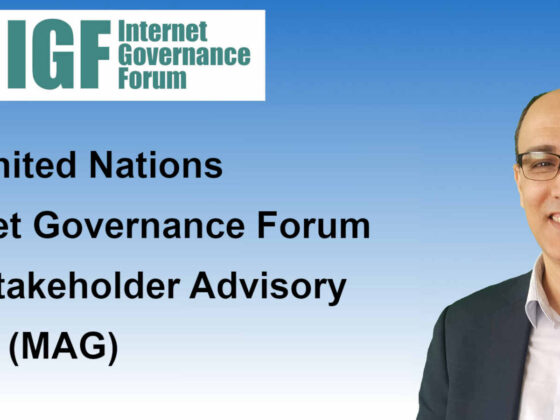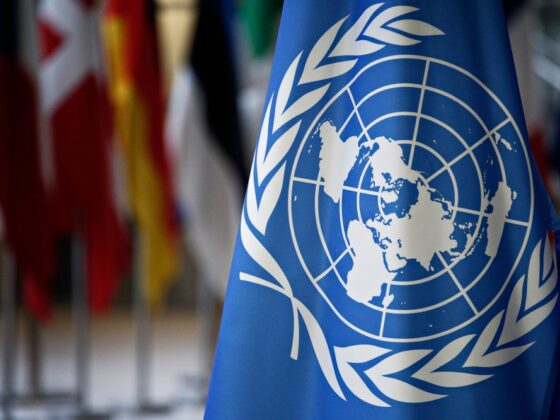The digital landscape is evolving at an unprecedented pace, and the concept of the Metaverse has quickly emerged as a transformative force, reshaping how we interact, work, and socialize online. The Metaverse, a collective virtual space encompassing various platforms and applications, has the potential to redefine our digital experiences. However, to unlock its full potential, a range of tech protocols must be developed and implemented to address critical challenges such as interoperability, privacy, security, and user experience.
As the boundaries between the physical and digital worlds become increasingly blurred, tech protocols play a crucial role in ensuring seamless interaction and data exchange between different platforms. By promoting open standards and fostering cooperation among stakeholders, these protocols drive the development of a genuinely interconnected Metaverse accessible and inclusive to all. In the upcoming sections, we will discuss the importance of interoperability and how tech protocols address this central challenge in building a cohesive Metaverse.
Privacy and security have also emerged as vital concerns, especially as the Metaverse grows and expands. Tech protocols play a pivotal role in safeguarding user data and protecting against potential threats while maintaining a balance between privacy and the utility of information. In the forthcoming parts of this post, we will delve into the advanced cryptographic techniques and secure computation constructs employed by these protocols to offer robust solutions to the complex privacy and security challenges arising in the Metaverse.
Throughout this blog post, we will examine several tech protocols that are revolutionizing how we interact with the digital world, fostering interoperability, ensuring privacy and security, and enhancing user experiences. As we navigate the digital future together, these protocols will continue transforming the Metaverse, shaping a more interconnected, secure, and immersive future for all.
Open Standards for the Web
As we navigate the constantly evolving digital landscape, open standards increasingly become the cornerstone of technological innovation. These protocols are pivotal in shaping a more inclusive, secure, and user-centric digital environment, fostering interoperability, ensuring privacy and security, and enhancing user experiences. As part of a broader strategy, tech companies are embracing these open standards to prepare their products and features roadmap better and stay ahead in the rapidly changing digital world.
The InterPlanetary File System (IPFS) is an open-source protocol that decentralizes content distribution, making the web faster, safer, and more open. By replacing the traditional centralized model with a distributed network, IPFS enables users to access and share content more efficiently, paving the way for a more interconnected Metaverse. Companies like Meta and Cloudflare have shown interest in integrating IPFS into their products and services, highlighting the growing importance of decentralized content distribution.
Decentralized Identifier (DID) protocol addresses the challenges of digital identity management by allowing users to create and manage their digital identities without relying on centralized authorities. This empowers individuals to have greater control over their personal data, which is crucial for privacy and security in the Metaverse. Tech giants like Microsoft are actively involved in the development of DID.
Project Liberty and the Decentralized Social Networking Protocol (DSNP) are revolutionizing how we interact on social media platforms. Project Liberty is an open-source initiative to create a decentralized social media ecosystem, giving users greater control over their data and digital identities. The DSNP, a key component of Project Liberty, enables interoperable and privacy-preserving communication between different social media platforms, fostering a more inclusive and user-centric social media landscape.
The “At Protocol” is another groundbreaking innovation in the realm of decentralized technology. Designed to enable secure, private, and consent-based interactions between users, the At Protocol offers a novel approach to digital identity and data management. This open-source protocol provides a foundation for developers to build applications prioritizing user privacy and security, making it a valuable addition to the burgeoning ecosystem of open standards for the web.
In the domain of privacy-preserving advertising, tech companies like Meta and Mozilla are actively involved in developing innovative proposals such as Interoperable Private Attribution (IPA) and Multi-party Computation of Ads on the Web (MaCAW). These proposals aim to balance user privacy with the needs of digital advertising players by employing advanced cryptographic techniques and privacy-preserving mechanisms. These proposals are transforming the digital advertising landscape by supporting major aggregate conversion measurement use cases and providing more comprehensive and accurate ad targeting without revealing additional user information.
The growing adoption of open standards for the web addresses the challenges of an increasingly interconnected digital world. Tech companies proactively push to adopt these standards, shaping their product and feature roadmaps to align with a more decentralized, secure, and interoperable digital ecosystem. By embracing these groundbreaking tech protocols, we can expect a transformed Metaverse and a digital future that empowers individuals, businesses, and developers alike.
Virtual Worlds and the Metaverse: Uniting Through Interoperability
The Metaverse, a concept that envisions a vast, interconnected network of virtual worlds, is rapidly gaining traction as an exciting frontier in the digital landscape. To realize its full potential and create a cohesive user experience, interoperability between different platforms, applications, and digital environments is paramount. In response, various groups and initiatives are working tirelessly to develop open-source solutions and standards that promote seamless integration, unlocking the true potential of the Metaverse.
The Open Source Metaverse Project (OSMP) is a collaborative effort that brings developers, designers, and enthusiasts together to create a decentralized, open-source Metaverse ecosystem. By providing the necessary tools, resources, and frameworks, the OSMP empowers creators to build immersive virtual worlds that can easily connect and interact with one another. The project’s commitment to open-source development fosters a spirit of collaboration and ensures that the resulting Metaverse is accessible, adaptable, and resilient.
The World Wide Web Consortium ( W3C), a well-known international standards organization, has also recognized the importance of interoperability in the Metaverse. In response, they established the Metaverse Interoperability Community Group (MICG), which aims to identify and address the technical challenges associated with creating a seamless and interconnected Metaverse. Comprising experts from various industries, the MICG is working to develop and promote open standards that can be adopted across platforms, ensuring a consistent and user-friendly experience for all.
The Internet Engineering Task Force (IETF) is an open international community of network designers, operators, vendors, and researchers who work together to develop and promote voluntary Internet standards. IETF participants collaborate on various aspects of Internet architecture, including security and privacy, to ensure the interoperability and stability of the global network. These collaborative efforts result in the development of protocols and specifications that are widely adopted by the industry.
The Open Metaverse Interoperability Group (OMIG) is another significant player in the quest for a united Metaverse. This consortium of industry leaders, developers, and researchers is dedicated to fostering collaboration, innovation, and the exchange of ideas to pursue a genuinely interconnected Metaverse. By focusing on open standards, protocols, and APIs, the OMIG is driving the creation of a robust and versatile ecosystem that supports seamless interactions between different virtual worlds, applications, and devices.
These groups and initiatives pave the way for a more unified and immersive Metaverse by addressing the critical interoperability issue. Through the development of open standards and protocols, they are ensuring that virtual worlds can easily connect, communicate, and share resources, creating a holistic and consistent user experience across platforms.
By actively promoting collaboration and knowledge-sharing, these groups foster an environment encouraging innovation and the rapid development of new technologies. This, in turn, attracts the interest of major tech companies and developers, who recognize the value of being part of a thriving and interconnected digital ecosystem.
The efforts of the Open Source Metaverse Project, W3C Metaverse Interoperability Community Group, IETF Metaverse discussion group, ITU Focus Group on the Metaverse, and the Open Metaverse Interoperability Group are playing a crucial role in shaping the future of the Metaverse. By championing interoperability and open standards, these initiatives are helping to create a digital landscape where virtual worlds can coexist and interact seamlessly, unlocking the true potential of the Metaverse and paving the way for a more vibrant, immersive, and interconnected digital future.
Privacy and Security in the Digital Age
The digital landscape is rapidly evolving, and as user data becomes an increasingly valuable commodity, the need for privacy and security in online advertising and data management has never been more critical. Several proposals have emerged, such as Google’s FLoC, Criteo’s SPARROW, and Microsoft’s PARAKEET, which all aim to balance user privacy with the needs of advertisers. Additionally, the Privacy Sandbox, a set of proposals from Google, is working to make the internet more privacy-friendly while maintaining ad-supported content creation for publishers.
Google’s FLoC (Federated Learning of Cohorts) has faced opposition from privacy advocates, as it aims to provide cross-site behavioral advertising without enabling cross-site identity for anyone other than the browser. Instead, FLoC places users into cohorts based on common browsing behaviors and patterns. This approach allows advertisers to identify valuable cohorts for their campaigns and target advertising to those cohorts on other sites without needing a user identifier.
Criteo’s SPARROW (Secure Private Advertising Remotely Run On Webserver) proposal builds upon Google’s TURTLEDOVE by introducing a publisher-side “Gatekeeper” function fulfilled by a server. The publisher and browser trust this Gatekeeper to protect user privacy while enabling server-side processing. SPARROW aims to preserve user privacy and maintain ad effectiveness simultaneously by allowing real-time reporting, pacing, and attribution and enabling smoother and less disruptive adoption.
Microsoft’s PARAKEET (Private and Anonymized Requests for Ads that Keep Efficacy and Enhance Transparency) proposal takes inspiration from TURTLEDOVE and SPARROW, focusing on limiting the amount of granular, high-fidelity information leaving the browser. PARAKEET introduces a trusted server that performs off-device computation to gain the benefits of an aggregated view of shared information. The proposal acts as a filter, checking how much information about a particular browser has been shared with each recipient and obfuscating or removing key pieces to prevent re-identification.
These proposals highlight the various approaches tech giants take to prioritize user privacy while maintaining effective advertising strategies. However, the nature of Standard Development Organizations, such as the W3C, requires a consensus to be reached for an industry-adopted protocol. This consensus-seeking process will play a critical role in determining the future of privacy and security in the digital advertising landscape.
As adopting privacy-enhancing proposals like FLoC, SPARROW, and PARAKEET continues to grow, advertisers and platforms must adapt to these new paradigms.
They must find innovative ways to maximize the value of their campaigns while respecting user privacy. This transformation will benefit end-users by safeguarding their personal information and creating a more secure, transparent, and sustainable digital ecosystem for all stakeholders.
The digital age presents new challenges for privacy and security in advertising and user data management. With the emergence of proposals such as FLoC, SPARROW, and PARAKEET, the industry is actively working to balance user privacy and advertisers’ needs. These efforts are crucial to shaping a more secure and privacy-centric digital future.
The potential of tech protocols to revolutionize the digital landscape and the Metaverse is significant. Protocols and privacy-preserving advertising mechanisms address essential challenges in the ever-evolving digital world.
In the Metaverse, these advancements enable efficient and secure communication, enhancing user experiences and fostering new business models. Privacy and security initiatives, including Interoperable Private Attribution, PARAKEET, FLoC, and TURTLEDOVE, showcase the industry’s commitment to balancing user privacy with data-driven advertising, sustaining the open web.
Collaborative efforts and communities, like IETF, IEEE, W3C, ACM, and the Open Metaverse Initiative, exemplify the importance of cross-collaboration in creating widely accepted standards. These communities drive innovation and develop solutions to address digital age challenges by promoting cooperation and knowledge sharing.
In conclusion, tech protocols and collaborative initiatives are crucial in shaping the digital landscape’s future and the Metaverse. As we continue to navigate this evolving space, fostering an environment that encourages collaboration and knowledge-sharing ensures the development of robust solutions that benefit all stakeholders.










